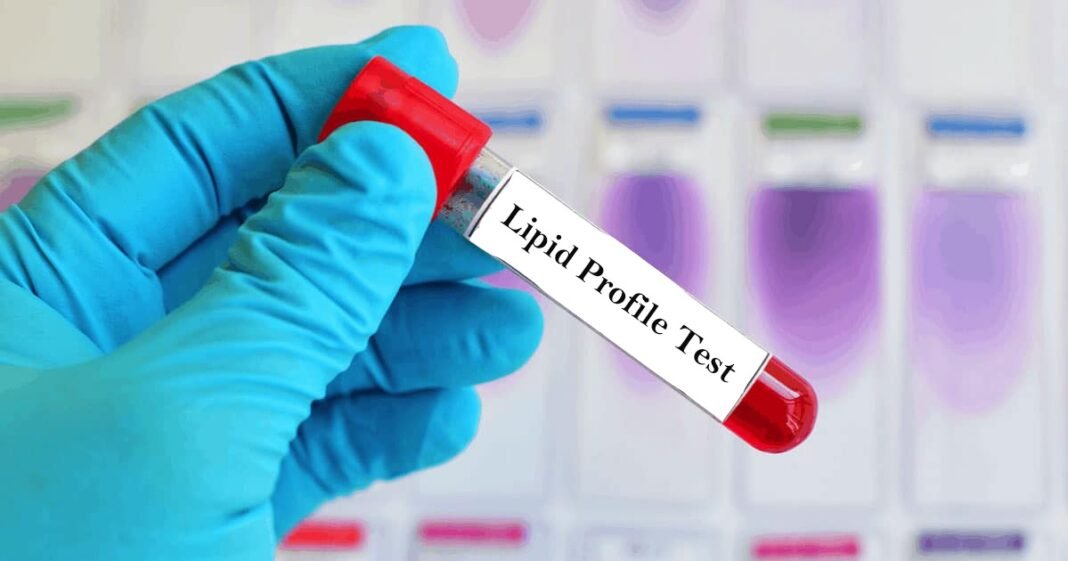Lipid profile test, also known as a lipid panel or lipid profile, is a blood test that measures the levels of different types of lipids or fats in your blood. These lipids include total cholesterol, low-density lipoprotein (LDL) cholesterol, high-density lipoprotein (HDL) cholesterol, and triglycerides.
Lipids play an important role in your body, as they are used for energy, building cell membranes, and producing hormones. However, high levels of certain lipids, especially LDL cholesterol and triglycerides, can increase your risk of heart disease, stroke, and other health problems.
A lipid profile test is usually done as part of a routine check-up or if you have risk factors for heart disease, such as high blood pressure, diabetes, or a family history of heart disease. Your healthcare provider may also recommend this test if you are on certain medications that can affect your lipid levels.
The normal range for a lipid profile test varies depending on the type of lipid being measured. Below, we will discuss the normal ranges for each type of lipid in a lipid profile test.
Total Cholesterol
Total cholesterol is the total amount of cholesterol in the blood. The normal range for total cholesterol is less than 200 milligrams per deciliter (mg/dL). A total cholesterol level between 200 and 239 mg/dL is borderline high, while a level of 240 mg/dL or higher is considered high.
LDL Cholesterol
LDL cholesterol is often called “bad” cholesterol because it can build up in your arteries and increase your risk of heart disease and stroke. The normal range of LDL cholesterol is less than 100 mg/dL. An LDL cholesterol level between 100 and 129 mg/dL is considered near or above optimal, while a level between 130 and 159 mg/dL is considered borderline high. A level between 160 and 189 mg/dL is considered high, while a level of 190 mg/dL or higher is considered very high.
HDL Cholesterol
HDL cholesterol is often called “good” cholesterol because it helps to remove LDL cholesterol from your arteries. The normal range for HDL cholesterol is 40 to 60 mg/dL. A level less than 40 mg/dL is considered low, while a level higher than 60 mg/dL is considered protective against heart disease.
Triglycerides
Triglycerides are a type of fat that your body uses for energy. However, high levels of triglycerides can increase your risk of heart disease and stroke. The triglycerides normal range is less than 150 mg/dL. A level between 150 and 199 mg/dL is considered borderline high, while a level between 200 and 499 mg/dL is considered high. A level of 500 mg/dL or higher is considered very high.
It is important to note that getting a lipid profile test is a crucial step in assessing your risk for heart disease and stroke. By knowing your lipid levels, you and your healthcare provider can work together to make necessary lifestyle changes or consider medication to manage any elevated levels.
What Affects Your Lipid Profile?
Several factors can affect your lipid profile test results. These include:
Age: Cholesterol levels tend to increase as you get older.
Gender: Men typically have higher levels of cholesterol and triglycerides than women.
Diet: A diet high in saturated and trans fats can increase your cholesterol and triglyceride levels.
Weight: Being overweight or obese can increase your cholesterol and triglyceride levels.
Physical Activity: Regular physical activity can help lower your LDL cholesterol and triglyceride levels and increase your HDL cholesterol levels.
Family History: If you have a family history of high cholesterol or heart disease, you may be at increased risk.
Lipid Profile Test Price
To find out the lipid profile test price, you can check with your healthcare provider or contact a local laboratory or clinic. Many insurance plans cover the cost of this test as part of routine preventative care, but it is always best to confirm with your provider.
How to Interpret Your Lipid Profile Results
If your lipid profile test results are within the normal range, it is likely that you are at low risk for heart disease or stroke. However, it is important to note that normal results do not guarantee that you will not develop these conditions.
If your lipid profile test results are not within the normal range, your healthcare provider may recommend lifestyle changes, such as diet and exercise, to help lower your cholesterol and triglyceride levels. In some cases, medication may also be necessary.
Conclusion
A lipid profile test is a blood test that measures the levels of different types of lipids in your blood. The normal range for each type of lipid varies, and it is important to discuss your results with your healthcare provider.
Read Other Stories Loved by Our Users – Lose Weight Quickly with These Powerful Habits







































